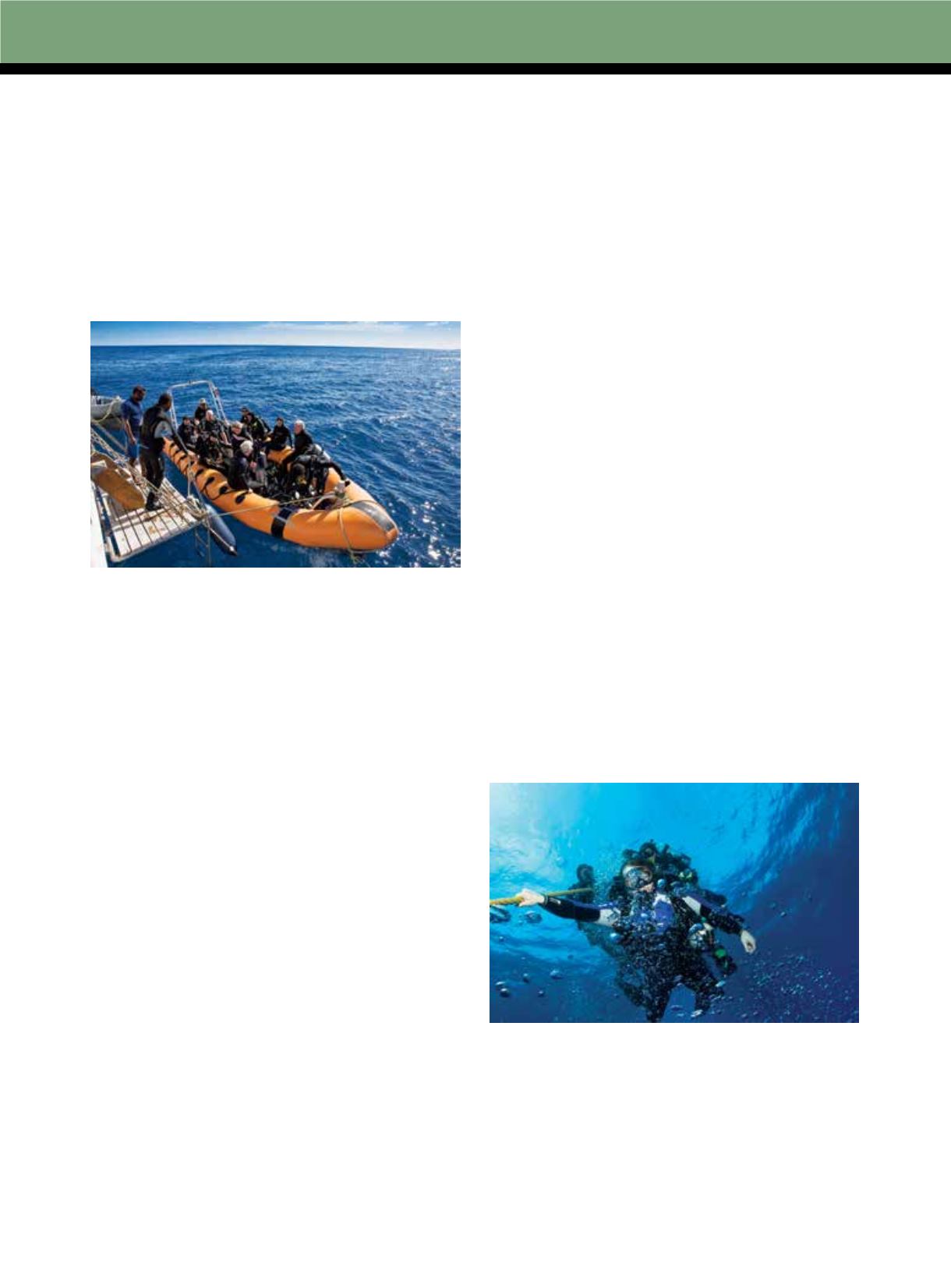

90
|
WINTER 2016
the line is crossed without injury the rule will become
less important. After it has been crossed a few times
the rule may seem irrelevant, or the individual may
perceive himself or herself as being endowed with
special protection. Both of these viewpoints can lead
to poor choices. Flipping the focus to “do this and
be safer” can provide much healthier reinforcement.
When nothing bad happens, the positive benefits of the
practice are reinforced. Both peace of mind and good
practice are promoted.
Avoid mission creep.
Even the best intentions can
be pushed aside by trouble-free diving and personal
comfort. This can be exemplified on multiday dive
trips. The intensity of diving frequently increases as
the trip continues. It is not uncommon for a person
developing DCS during a trip to describe their most
conservative practice as their norm. Electronic dive
logs, however, frequently show an erosion of safety
buffers over successive days.
Pick your partners well.
The mindset and practice of
others in your group can radically affect your risk.
Choosing those with complementary goals, objectives
and attitudes can help ensure that the activity remains
within your comfort zone. If someone you are
diving with pushes you beyond your comfort zone,
remember the first two rules: Know the risk, and take
responsibility for your own safety.
Use tools to defend your practice.
Selecting appropriate
conservatism settings on your dive computer can reduce
the need to argue over no-decompression limits or
decompression profiles. Going back to the faith we often
have in computers, differences in the selected settings
may prompt discussions that help everyone gain insight.
A critical mind is essential at this point to weigh the
merits of the often heartfelt beliefs of those participating
in the debate. Understanding the available tools is
important for understanding the options and levels of
conservativism. An article about gradient factors in the
Fall 2015 issue of
Alert Diver
might be helpful to this end.
1
PRACTICAL STRATEGIES
Solid knowledge, awareness, critical thinking and
smart partner selection provide the foundation for
good diving practice. Implementation requires further
thought. Employing a number of small buffers can
produce a web of protections that can mean giving up
little in the way of opportunity while maintaining a
high degree of conservatism.
The dive profile is the single most important
determinant of the ultimate decompression risk of
a dive. The shift from square profiles to multilevel
profiles can produce powerful advantages.
Going deep increases the rate of inert gas uptake and
the ultimate amount to be eliminated, but going to the
extremes of one’s training can be enticing. Multilevel
diving offers a good way to scratch that itch while
maintaining good decompression safety. Choosing sites
appropriate for multilevel dives is a great way to start.
In the simplest case, swimming outbound at one depth
and back at a shallower depth can limit inert gas uptake
and extend the controlled inert gas elimination period.
Decompression stress is minimized, and the diver can
experience different zones during a single dive.
Out and back is fine for many recreational exposures,
but as maximum depths increase, it becomes increasingly
important to spend progressively more time at
progressively shallower depths. Dive sites that make this
easy facilitate optimized dive profiles.
The high relative rate of pressure change in the
shallowest zone makes it critical in determining the
overall decompression stress. Next to backing off the
intensity of a dive, the most important decompression
safety buffer is time spent in the shallow regions
during ascent. For much recreational diving this can
be considered the depth range shallower than 25 feet.
The popularization of the safety stop was probably the
Choose dive partners whose risk tolerance,
goals and attitudes align with your own.
The popularization of the safety stop was
probably the most significant evolution
in decompression safety for recreational
diving in the past 30 years.
STEPHEN FRINK
STEPHEN FRINK
















